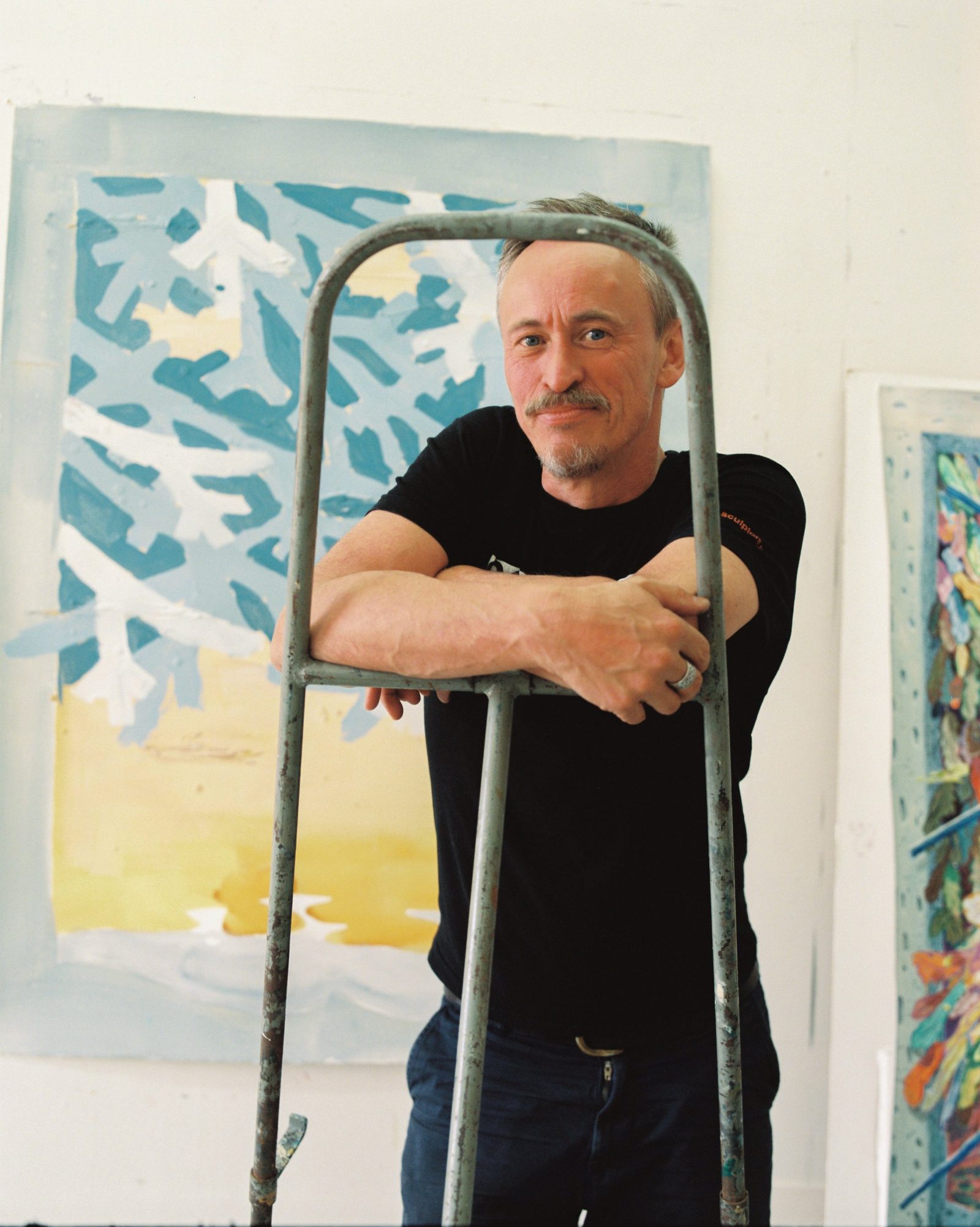We sat down with artist Bo Haglund for a discussion about his inspirations and process behind his artworks, currently on display in our gallery as part of the exhibition Listening to the Forest That Grows – Season II from 2 December 2022 to 1 April 2023.
Hi Bo! How are you feeling about being in Paris right now?
I’m feeling great about being here. I already arrived [in France] in the beginning of July when I started my residency in Grez-Sur-Loing. There is this art residency, Hôtel Chevillon, that was founded by a Swedish foundation in the 1990’s because in the 1800’s many artists from the Nordic countries went to work there. I have a great workspace that used to be Carl Larsson’s atelier. Grez-Sur-Loing is a small peaceful village from where I have easy access to Paris and its various exhibitions.
Two of your works have French names, L’Heure bleue and Le Coucher du Soleil, does France or the French language have a special place in your heart?
Kind of. I’ve been to France quite a few times and have worked as an artist-in-residence in the Cité des Arts in Paris, for example. In my daily life I get by with my French, but I don’t speak it that well. And for the names, I think they have just come naturally to me when working here. The French language is very beautiful and poetic to me.
What has inspired the themes and motifs in your artworks on display in our gallery?
When I did a residency in France in 2018, I was really inspired by the forests of Fontainebleau. In my works on display in your gallery I have developed this sort of repetitive theme where the background is a forest or lots of vegetation and in the front is a podium or a platform, but the scene is rather a surreal one than a realistic one. It’s almost a theatrical scene with a stage where something always happens. The basic idea behind the works is the relationship between humans and nature and what it’s like nowadays. Has it evolved into a more of a cosmetic relationship where we see nature solely as a background?
Your artworks have a fairy-tale and dreamlike feeling to them, is there a story behind the works?
I think you hit the nail in the head! There is definitely a narrative aspect present in my art. I started my career as a scenographer in both theatre and film. After that, I moved on to comics, which is storytelling in itself. My works have a lot of elements that make them seem like they are from a cartoon. I enjoy creating my own narratives and scenes, which wasn’t possible in theatre.
What is your process like behind your artworks?
Sometimes it varies a lot. It depends on the theme and what interests me at the moment. During these past years I have worked quite intuitively as I pretty much know what the picture is going to be like in terms of composition. So I guess the pictures just come naturally from my subconsciousness.
Your choice of material is often gouache. Is that a technique that comes the most naturally to you or have you worked with other techniques as well?
Lately I have done a lot of gouache work, but I have worked with oil paint and acrylic as well. I really like paper as a material, for me it creates this feeling of freedom in a way. I’m also very used to working with paper as I used to do cartoons and sketch a lot as a scenographer. Paper’s advantage is also that it’s easy to roll up and then transport.
Then a couple of questions about Finland where you work most of the time. Who do you consider to be the most interesting artists in Finland right now?
Ouch! Well, I was really impressed by Kari Vehosalo’s exhibition in Tampere last summer. He is brilliant! Then there’s Joel Slotte, whose works were in Kiasma recently. A third inspiring artist could be Leena Luostarinen, who worked mostly in the 80’s and 90s. I’m sure when I walk out of this interview I will remember plenty of other names as well…
Time for our last question: what is the contemporary art scene like in Helsinki?
Unfortunately, I quite rarely go to gallery openings because I basically live in the countryside. Moreover, the artist’s work is quite lonely and I spend a lot of time in my studio. I would say the art scene is opening up and changing a lot, towards a more positive direction in my opinion. Previously it felt like there was room for only one artist at a time and all the others were in their shadow, but now I feel like there’s space for everyone. In Helsinki there are many young artists who do amazing things. I feel the atmosphere is very open and distinct, different from Western and Central Europe.
Find out more about Bo Haglund’s artistic journey here.
Interview: Helmi Anttila
